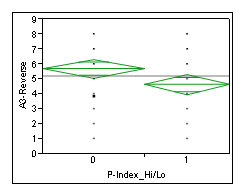Media Effects Research Lab - Research Archive
The role of modality in instructional technology
Student Researcher(s)
Mike Hills (Ph.D Candidate);
Shannon Kennan (Ph.D Candidate);
Mike Montalto-Rook (Ph.D Candidate);
Faculty Supervisor
INTRODUCTION
This study examines the effectiveness of a text-only, audio-only, audio+outline (e.g. PowerPoint), and text+audio lesson module to determine if an optimal modality exists. A more comprehensive understanding of the role of modality has significant practical implications for better informing instructional technology designs in an online learning environment.
RESEARCH QUESTION & HYPOTHESES
For people, controlling for age, gender, major/discipline, and amount of time spent online in a variety of activities, what is the relationship between (IV’s) multimedia modality, power user status, multitasking ability, experience taking/teaching an online course and (DV’s) recognition, recall, and perception of modality effectiveness?
H1 – High level power users will perform better in recognition and recall than low level power users.
H2 – There will be a significant difference in the perception of modality effectiveness across low and high power users.
H3 – People’s multitasking ability will affect their perception of the modality condition in that high multitaskers will perceive the multimodal conditions more positively and the single modal treatment conditions more negatively.
H4 – People’s experience with a variety of online activities will affect their perception of the effectiveness of the modality condition in that high online activity users will perceive the multimodal conditions more positively than the single-modality conditions.
H5 – Participants with experience taking/teaching a course online will perform better than those with no experience.
METHOD
This study presented a lesson on the topic of sky farming via four modalities, administering a follow-on questionnaire to eighty-eight individuals at the University Park Campus of the Pennsylvania State University. Students followed a link that randomly assigned them to one of the four conditions (i.e. text-only, audio-only, audio+outline, text+audio). After viewing the lesson, respondents were linked to a questionnaire via Survey Monkey.
RESULTS
Text+outline (i.e. PowerPoint) was shown to be the most effective modality in terms of recognition. This is interesting because it is potentially important for instructional design in an online learning environment.
H1 is not supported: results indicate no statistically significant difference in the performance of power users in either recognition (F(1,68)=0.0993, p=0.7536) or recall (F(1,68)=1.0553, p=0.3079).
H2 was supported: results show that low power users have a significantly more positive perceptions of the ease with which they were able to follow the lesson (F(1,68)=5.1828, p=0.0260).

Figure 1. Perception by Power Users, High vs Low
H3 is not supported: H3 speculated that people’s multitasking ability will affect their perception of the modality condition in that high multitaskers will perceive multimodal conditions more positively and single modal conditions more negatively. Low multitaskers, on the other hand, show an affinity for as rich a modality as is possible, with full-text plus audio the preferred modality.
H4 and H5 were both supported: results approaching significance with a p-value of 0.0743 for high versus low online users were found. Because this value was so close to significance, we conducted post-hoc testing, contrasting the text+audio condition with all other conditions which yielded statistically significant support that high online activity users do find the text+audio condition less difficult to follow (F(1,62)=5.0027, p=0.0289).
CONCLUSION
Given the ever-expanding role of online education and the increased use of technology in delivering educational experiences to a broader and more diverse pool of students than ever before, understanding what is effective and what is not in delivering a positive learning outcome is vital. As more and more institutions of higher learning adopt these technologies and incorporate them into existing curriculums, a complete understanding of the role modality plays in performance and perception of learners is critical for 21st century educators and students alike.
For more details regarding the study contact
Dr. S. Shyam Sundar by e-mail at sss12@psu.edu or by telephone at (814) 865-2173

